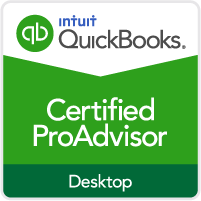Sales tax laws are constantly changing, and sales tax audits have increased since states and local agencies have become creative about finding new ways to generate revenues. If you haven’t made any changes in your sales tax procedures in a while, you are probably at risk.
Taxability
From state to state, the taxability of items varies. For example, data processing services including web hosting and graphics are taxable in Texas but not California. Because of these intricacies, it makes sense to consult an expert in this area. Some states have been taxing certain services for many years now.
Nexus
The new buzzword in sales tax is “nexus,” which simply means presence. If your business has a presence in a state, then certain items you sell could be taxable. “Presence” is a little gray, but here are a few examples of some characteristics that the courts have decided prove nexus.
- If you have employees or contractors working in a state, you are liable to collect and remit sales tax. This can play havoc if you hire virtual or remote workers. Even if they are part-time, you have nexus in that state.
- If you outsource inventory fulfillment in any way (think Amazon sales), you have nexus in states where there is a physical warehouse that houses your products.
- If you own business property in a state, you must file sales tax.
- If you participate in trade shows or are a public speaker, you have nexus in states where the conferences are held.
The Risk
If you fail to collect taxes where you should, the risk is easy to calculate. Take the potential taxable sales times the sales tax rate, and add any penalties. The numbers get scary if you’ve been in business for several years.
Let’s say your annual revenues are $5 million. You didn’t realize that your Texas sales were taxable, and this amounts to 10% or $500K. Your tax liability is $41,250 per year. If you have been doing it wrong for five years, well, you can add it up. Add penalties on top, and it’s not a small amount. It can wipe out your entire year’s profit.
Sales tax liability becomes more important if you plan to sell your business. A traditional valuation will always include a sales tax risk analysis. Even if you don’t plan to sell, the odds of you getting audited or a disgruntled employee blowing the whistle can be too much to risk.
If you want help calculating your risk or assessing nexus or taxability for your business, reach out and we can help.



 Want a free consultation with us? Give us a call at
Want a free consultation with us? Give us a call at 
